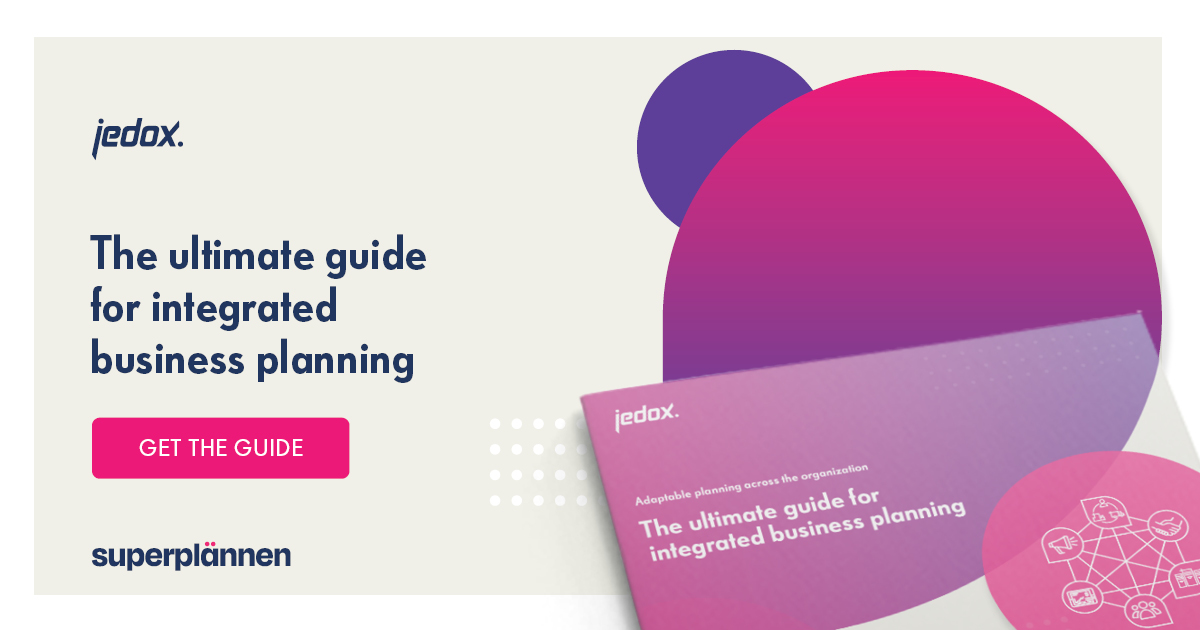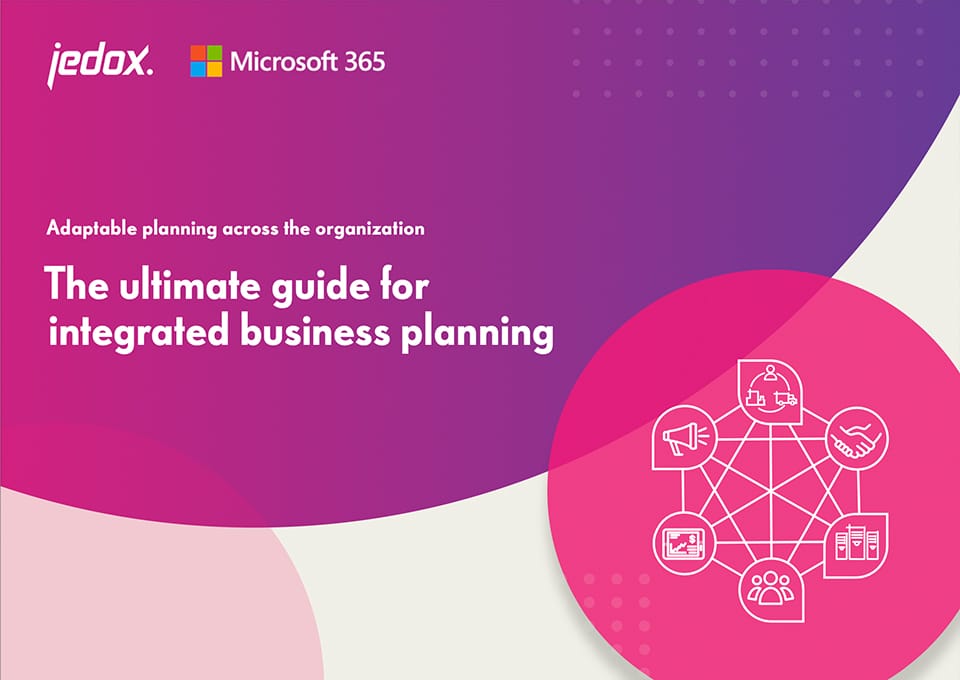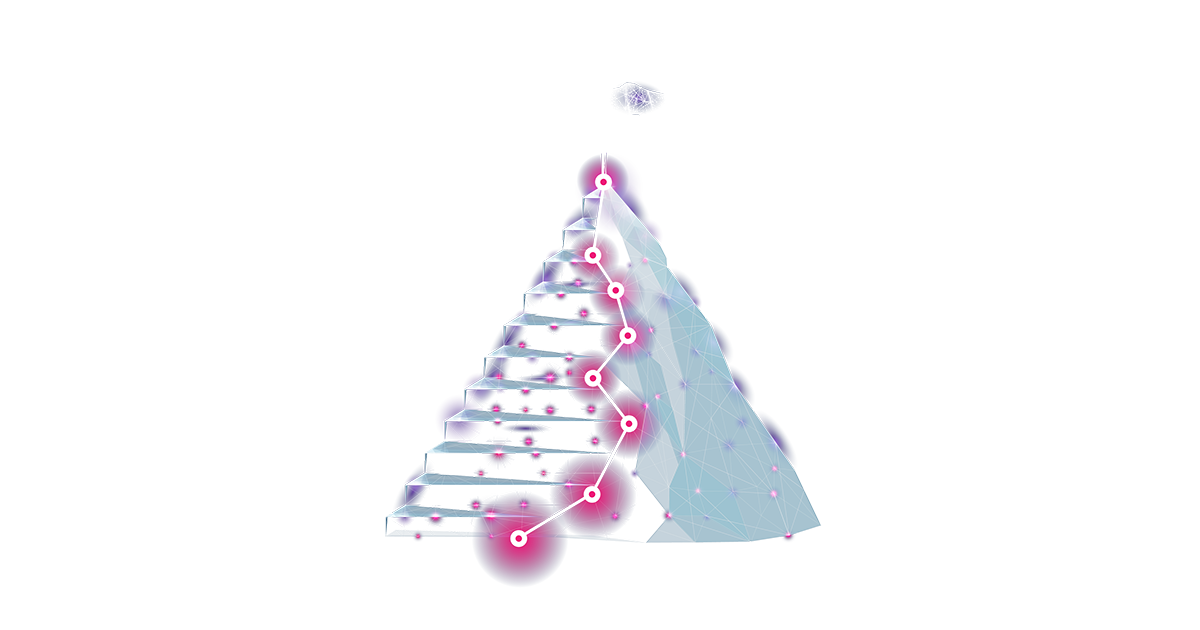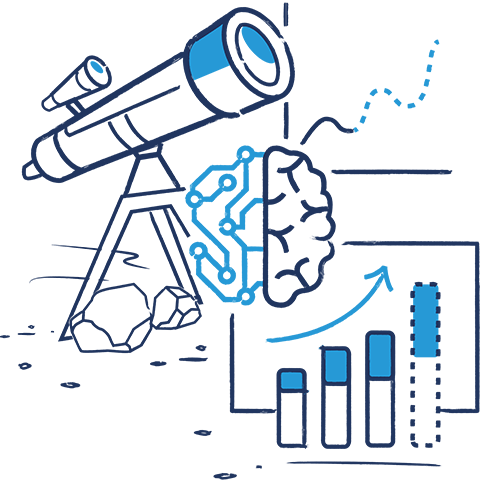
Predictive Forecasting
An unbiased view into the future. Although it is nearly impossible to predict the future, forecasting future market development and customer needs is an essential component of corporate strategy and planning. To meet this challenge, strategic planners, financial controllers and Business Intelligence experts seek out the best tools, techniques and solutions to give them a competitive edge in business forecasting. Predictive forecasting can help guide a company in growing more profitably and respond quickly to changes. The identification and processing of relevant data is key to a view into the future that is as unbiased as possible.
What is Predictive Forecasting?
Long-term strategies and costs can be more effectively planned with a specific tool: the forecast. Forecasts can be used in finance, marketing, human resources and other departments of a company. Forecasts are useful to minimize the risk of making the wrong decisions that end up being costly for the organization. The Predictive Forecast is an extension of the classic business forecast. It can be used to find new causal relationships based on new data. These enrich the available data set and provide a better forecast output. The predictive forecast can be continuously improved with every additional connection between data that is uncovered and utilized.
From data pattern to forecast
A forecast can be made with both qualitative and quantitative methods. The qualitative approach is generally based on customer surveys or industry expert opinions.
In the quantitative approach, for example in the area of Financial Planning and Analysis (FP&A), historical data, real-time analysis or causal relationships, or “data drivers”, serve as the basis for recognizing data patterns and making forecasts. For this purpose, models are created which are based on mathematical and statistical algorithms or with modern methods such as machine learning. Various methods are also used, such as clustering, driver analysis or regression analysis.
Forecasting versus Predictive Forecasting – What is the difference?
Although they sound similar, forecasting and predictive forecasting are two different problem-solving techniques.
Forecasting
Forecasting means prediction and is a technique that predicts the future value of selected data by looking at specific trends. This can be done either by qualitative forecasting, for example using a sales representative’s detailed knowledge of customer accounts, or by establishing quantitative correlations with other influencing variables. Ideally, it should give statements on the attainability of the existing goals and point out the need for action within a company. Thus, forecasting complements other business components such as strategic or operative planning.
Predictive Forecasting
Predictive Forecasting is an extension of classic forecasting. It considers a multitude of inputs, values, trends, cycles and fluctuations of the data in different business areas, in order to make predictions. It is a powerful, comprehensive data-driven approach that can be used to provide better support to the overall corporate planning and enterprise performance management process.
How Predictive Forecasting can drive your business forward
While forecasts are useful for developing internals, predictive forecasting also helps businesses generate unbiased, comprehensive, analytical insights to support improved decision making. Advanced predictive forecasting techniques use forms of artificial intelligence (AI) such as machine learning to predict more detailed, specific results, often with probability. This is usually done by viewing a large amount of historical and real-time data to identify patterns.
For example, predictive forecasting can help predict the company’s revenue for the coming year based on the forecasted development of specific variables such as search queries, competitor prices and extraordinary events. The impact of each driver can be analyzed individually, helping the company better understand market trends. Predictive forecasting is an automated forecasting technique that allows continuous adjustment of forecasts to help the company identify new opportunities and risks early and grow profitably.
Predictive Analytics – a Priority for FP&A
In today’s organizations, the role of financial controlling or FP&A is not only to provide financial insights so business partners can make better decisions, but it is also to lead the way towards a more mature use of analytics technology including predictive analytics for sales forecasting.
Moving up the analytics maturity curve from merely describing and reporting the past to gaining real insight and foresight into the future is a near-term priority for many financial leaders.
Predictive Analytics for Sales Forecasting
A great example for creating real value for the business with predictive analytics is predictive forecasting for sales. An accurate sales forecast is important because it drives many other business decisions. The sales forecast and sales budget are key inputs for setting the overall financial budget for the organization, including operational levers such as sales incentives, marketing budgets, product launches, new hires and so on.
However, sales forecasting is still a time-consuming process for sales planners, who are often reverting back to the good old Excel spreadsheet or other tools that often provide insufficient analytics and insights to inform the sales forecast for the next quarter, month or week. Advanced predictive analytics can help ease the burden on sales planners by automating rolling forecasts and providing executives with more transparency and smart decision support for enterprise performance management.
Addressing the Trust Question in Predictive Analytics
A major reason why organizations are still hesitating to implement more automated processes for sales forecasting with predictive analytics is simply a lack of trust and confidence in machine-generated results.
One way to build trust and get buy-in from planners is to make the quality of predictions highly transparent for planners and managers alike. There are a couple of ways to do this. We at Jedox include the following functionality in Jedox AIssisted™ Planning, the integrated Jedox cloud service for predictive analytics and artificial intelligence:
- A quality factor, so planners can transparently evaluate which prediction is the best for use in their forecast and can automatically select the best hierarchy level for the forecast
- A comparison of predicted and actual sales over time, along with upper and lower bounds to determine the accuracy of the prediction and assess it against manual planning results

Screenshot: Sales forecast with quality factors displayed on the top left
With more confidence and a way for the user to assess the accuracy of predictions, planners start to feel more comfortable and increasingly rely on the guidance and recommendations provided by predictive analytics. This can lead to a higher quality of forecasts and a much faster time to completion, freeing-up valuable time and enabling a higher frequency of rolling forecasts or even a continuous forecasting system. Sales management gains higher levels of transparency and ability to recognize biases or risks by comparing the machine-generated recommendation for the best prediction to the human expert opinion.
Transforming Forecasting by Digitizing Human Expertise
The ultimate goal of predictive analytics for sales forecasting is to fully automate the forecasting process and enable continuous forecasting with real-time data. This is done by capturing and digitizing human expertise, essentially teaching a computer system to “think” like a human sales planner. This knowledge is then enriched with additional relevant data from inside and outside the organization. Of course, the upfront data preparation takes time, since the impact of various data sources and drivers, such as competitive information, market developments and trends, has to be analyzed and integrated into the model. But once the undertaking yields high-quality, automated rolling forecasts that can be shared seamlessly across the business, FP&A, sales planners and sales management will have made a significant step towards digital transformation. The business will be better equipped to detect early warning signs or leverage new opportunities. Now, FP&A and its business partners can spend less time on low-value tasks and more time on simulations that prepare the business for the future and increase business agility and adaptability.

